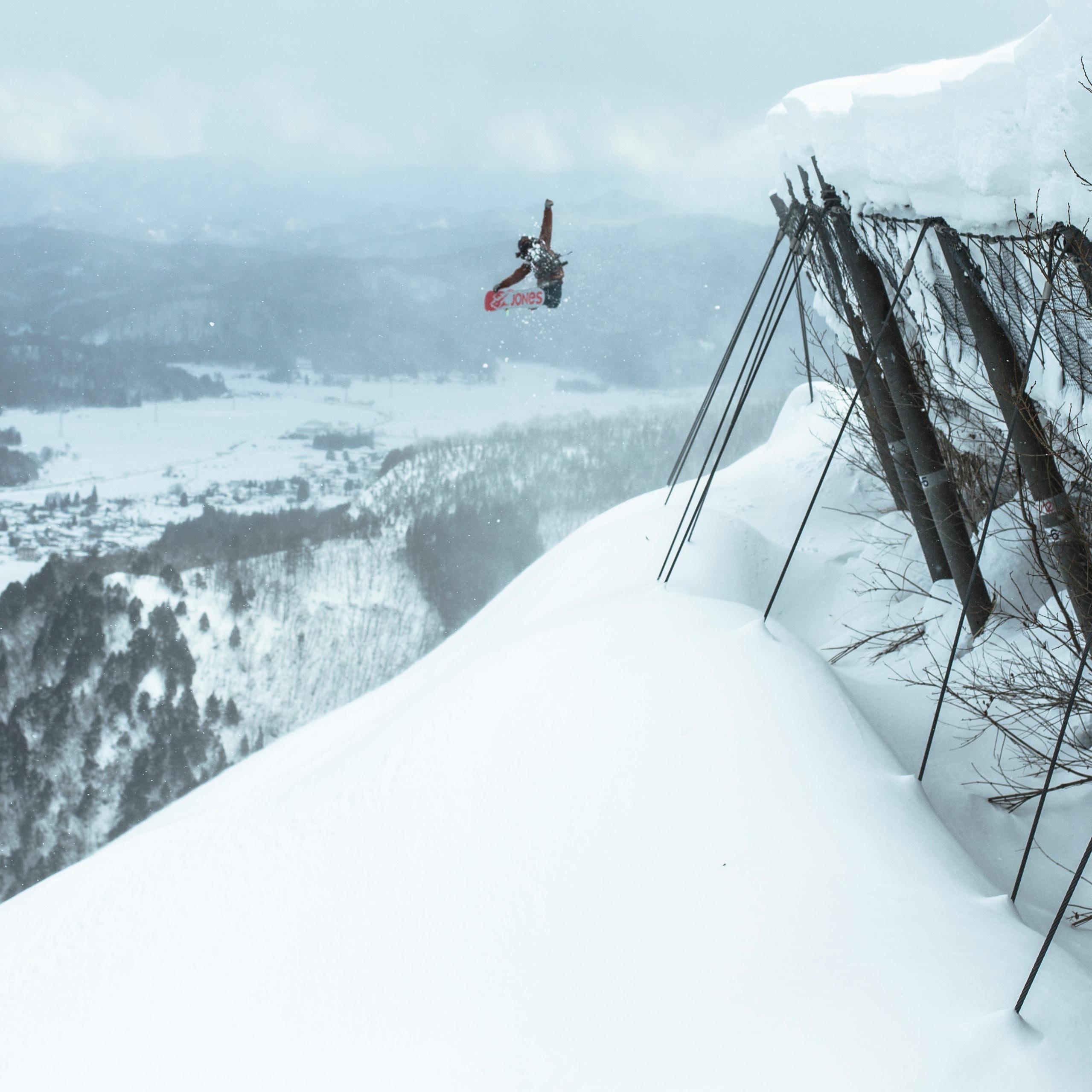
16 minute read
Halina Boyd
Halina Boyd goes big in Japan.
nuclear pow
Advertisement
A trip to Japan reveals that while the mountains keep giving, the consequences of Fukushima remain unknown.
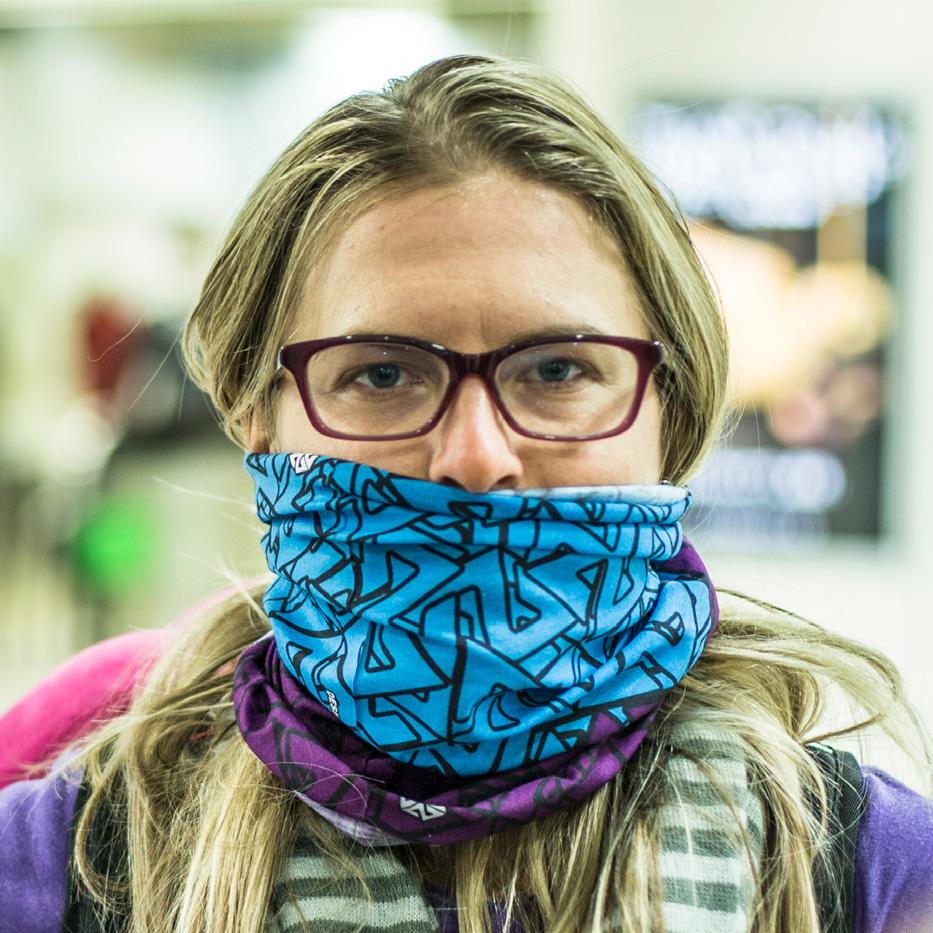
WORDS: HALINA BOYD
PHOTOS: MOSS HALLADAY
Cramped in a 2001 Land Rover with five other passengers and four hulking snowboard bags, we bounced along the snow-covered narrow streets of Hakuba, Japan. Luggage shuffling had become a part of our daily callisthenic routine. Today, we were moving from our original rental house to the Happo-One Ski Con, an equipped B&B our friend Shin Biyajma had found for us the night before. The driver of the SUV was Kenji Kato, our primary contact in Japan and the kind soul who had greeted our delirious, jet-lagged brains four days prior when we stumbled off a bus from Tokyo. Among the colorful patches and stickers decorating the Rover’s ceiling, I noticed an anti-nuclear energy sticker above Kenji’s rear-view mirror. Back in November 2014, when I was first brainstorming a trip to Japan, I was eager to find some sort of environmental or social issue to explore during the voyage. I started to research Fukushima, only second to Chernobyl as the largest nuclear disaster the world has ever seen.
On March 11, 2011, an off shore earthquake and its resulting tsunami wreaked havoc on Japan’s western coast. The Fukushima Daiichi Nuclear Power Plant was subsequently damaged, causing three of its six reactors to melt down, releasing radioactive particles into the atmosphere and ocean, contaminating groundwater, soil and seawater, and effectively closing local Japanese fisheries. According to a 2013 National Geographic article, TEPCO (Tokyo Electric Power Company) admitted that contaminated radioactive water has long been leaking into the Pacific, defying containment efforts. In addition, more than 129,000 people were displaced and there were 20,000 fatalities from the combined tsunami and nuclear fall-out. With very little compensation from TEPCO or the Japanese government, thousands of people are still displaced four years later. Many worry that the Japanese government, and the world, will forget them unless a greater global audience hears their voice.
As December approached and my Japan travels took shape, I asked a few friends who had lived in Japan if they had heard anyone talk about Fukushima, or what kind of effect it had on day-to-day life.
“As far as Fukushima goes, to be honest, I have never once heard anyone mention it in Japan,” answered my buddy Pete Connolly. He had lived on the north island in Hokkaido for two winters helping run Sass Global Travel’s Japan program. “That does not mean it isn’t an issue, but it is not a topic that seems to be spoken of very openly,” he continued. “They are very proud people, and it seems like it is a bit of a sore spot with them.” Needless to say, with this feedback, I was a little nervous to talk to just anyone on the streets in Japan and ask for their opinion. Offending someone was the last thing I wanted to do as a visitor in foreign land. Yet I definitely needed to talk with a Japanese person in order to get a grasp on how big of a deal this really was, and how it had affected their lives.
The anti-nuclear energy sticker was my tow-in, and I wasn’t going to let this opportunity pass. “Kenji, I noticed your sticker,” I began. “What are your thoughts on nuclear energy and the Fukushima meltdown?”
It was a big question and everyone in the Land Rover went silent.
“It was awful. So many people died and the government is barely doing anything to help with the clean up or to help the victims … I’d like to see us move towards green energy practices but even that is being blocked by the government,” Kenji said. “It’s scary to think, but with the nuclear bombs from WWII and now Fukushima, I don’t think there’s anywhere you can live in Japan that isn’t somewhat contaminated by radiation.” Kenji had lived in Seattle for five years and spoke fluent English, making him the perfect individual to answer such a loaded question. His words stayed etched in my mind, even as I tried to momentarily set them aside while we enjoyed Japan’s legendary powder.
After our second round of calisthenics for the day and settling into our new home for the week, our buddy Nagasawa Yusaku arrived to take us to his favorite ramen house just down the street. Kenji had connected us with Nagasawa a couple days prior to guide us around the sidecountry of Hakuba resorts till we got our feet under us. I had never particularly cared for the ramen I’d tried in the U.S. I thought it a preservative-packed dehydrated carb load reserved for emergency situations. I figured sushi would be the primary meal. Oh how I was wrong! A Japanese culinary staple, traditional ramen broth takes three days to make and has an endless depth of flavor. Its varieties are plentiful, from seafood to spicy vegetables, and each bowl is full of chewy, homemade noodles. Plump on ramen and Japanese whiskey, we jubilantly walked back to our hotel, stopping along the way at Nagasawa’s favorite shrine. He walked us through the ceremonial way to approach the shrine and we prayed to the spirits of the mountains to watch over us and keep us safe for the remainder of our journey. clear idea of the location of the HappoOne terrain park. After a couple wrong shuttle pick-ups and drop-offs (no big deal, we were accustomed to being “lost in translation” by now), our crew miraculously reconvened at the gondola without the assistance of cell phones. The event was a scene – about 120 snowboarders eager to session the banks, berms, and quarter pipes of varying size and shape. It looked like a class 4 wave pool frozen in time. It was so cool to watch the local riders get groovy – huge banked turns, hips and method mania. The Japanese have the most uniquely shaped boards I’ve ever seen, swallow tails, blunted tips and styled-out surfer turns dominated the scene.
The flurries that had been depositing plump snowflakes in our mouths all morning had picked up momentum. Now it was dumping six centimeters per hour. After our lunch of noodles prepared five different ways, we headed out to the sidecountry with Nagasawa to find some untracked Japow. Wandering upon an abandoned cat-track, we decided to test the snowpack. Taking off our boards, we sunk up to our hips and waded through stomach deep powder. When one ski cut triggered a remote 12-inch storm slab and multiple people heard whomping on the ridge line, we reached a consensus it was time to get out of there and back to the resort. As we jibbed our way down Happo-One, I caught a glance of some huge loaded avalanche barriers and knew it might just be what we needed to get some air. I asked Yusaku for his thoughts and he replied with a half confident “Yeah, I think, OK… maybe…”
The next morning we scouted out some avalanche barriers outside the resort’s boundaries in order to avoid any potential
Glorious pow slashing by Halina in the Land of the Rising Sun.
“rule bending,” and made our way through the boundary gate and down the ridge. After verifying we wouldn’t sink up to our necks landing in between the three tiered suspended netting, we started patting down our run-ins. The afternoon turned into a method, roast beef, chicken salad and backflip huck buffet. Jolly on stoke and footage from the day, we were shredding our way down the valley drainage when one of the ladies noticed a kamoshika teetering on a smaller avalanche barrier on the other side of the valley, staring at us. These Japanese mountain goats appear to be part wolf and part boar due to their thick grey winter coats and pointy ears. Turns out they’re super curious animals, and this one had been watching us for the better part of the afternoon. “So cool! I love this place! Hi goat!” I squealed. As we made our way down the drainage, I almost rode over a hippidy-hoppidy white snow hare the size of a two-year-old child and glimpsed one more kamoshika dart through the trees. The magic of the Japanese Alps was all around us.
When you’re getting lost in the trees, riding deep Japow and dodging mythical snow hares, it’s easy to forget about Fukushima. But the beauty of this place has imbued me with the desire to learn more, to protect and fight for Japan’s reverent people, unique wildlife and stunning mountains. This winter as snowboarders flock to Japan’s sacred terrain, we must question what has happened there and the long-term effects the Fukushima disaster will have on Japan’s people and environment.
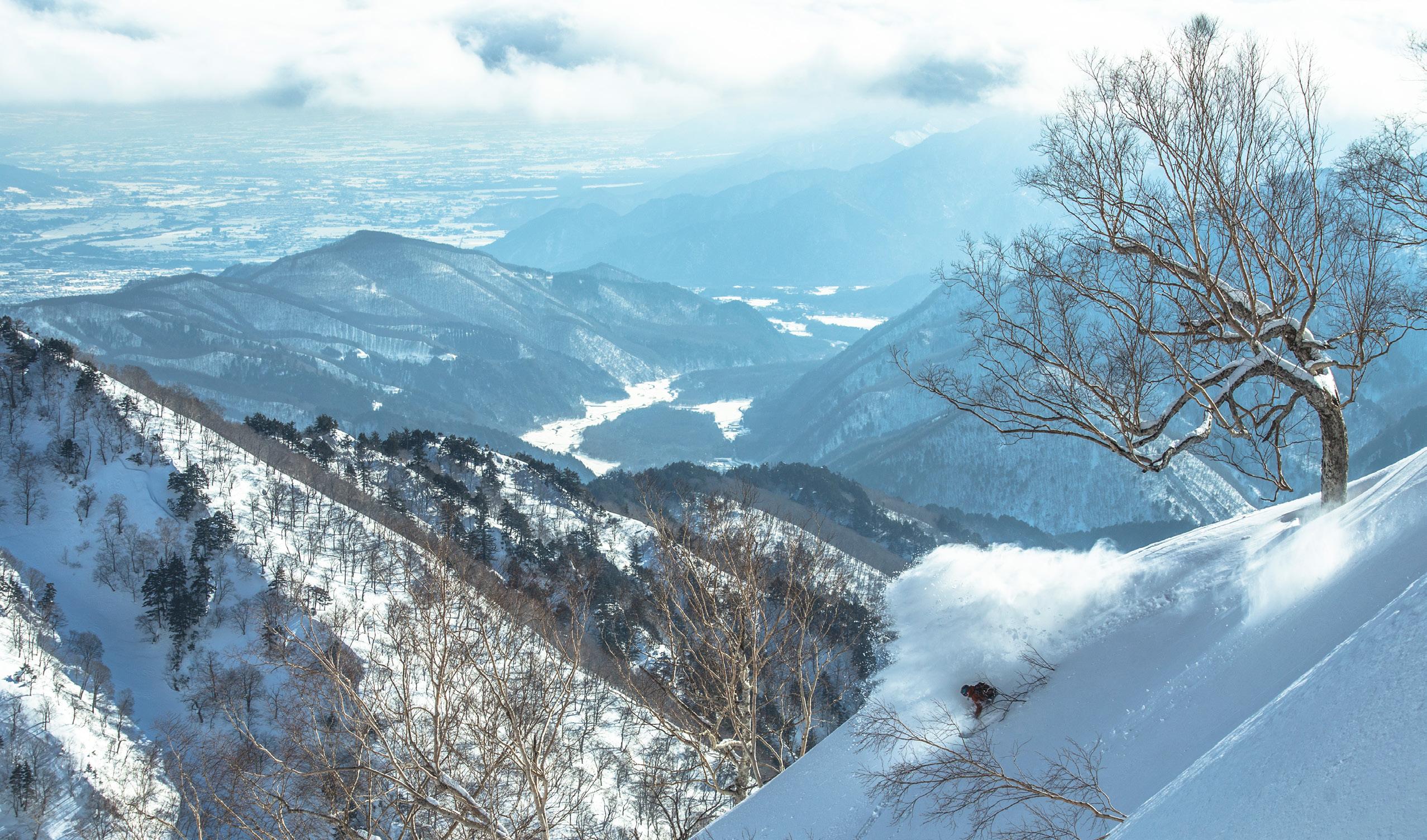
Perhaps what we can learn from Fukushima is that we cannot sit back and point fingers at previous generations for the problems we face today. Those of us that depend on nature’s splendors to do what we love have a special opportunity to be the architects of environmental change, to demand safe and clean energy. After all, nuclear reactors are located near many beloved places, including one just a couple hours from Jackson Hole.
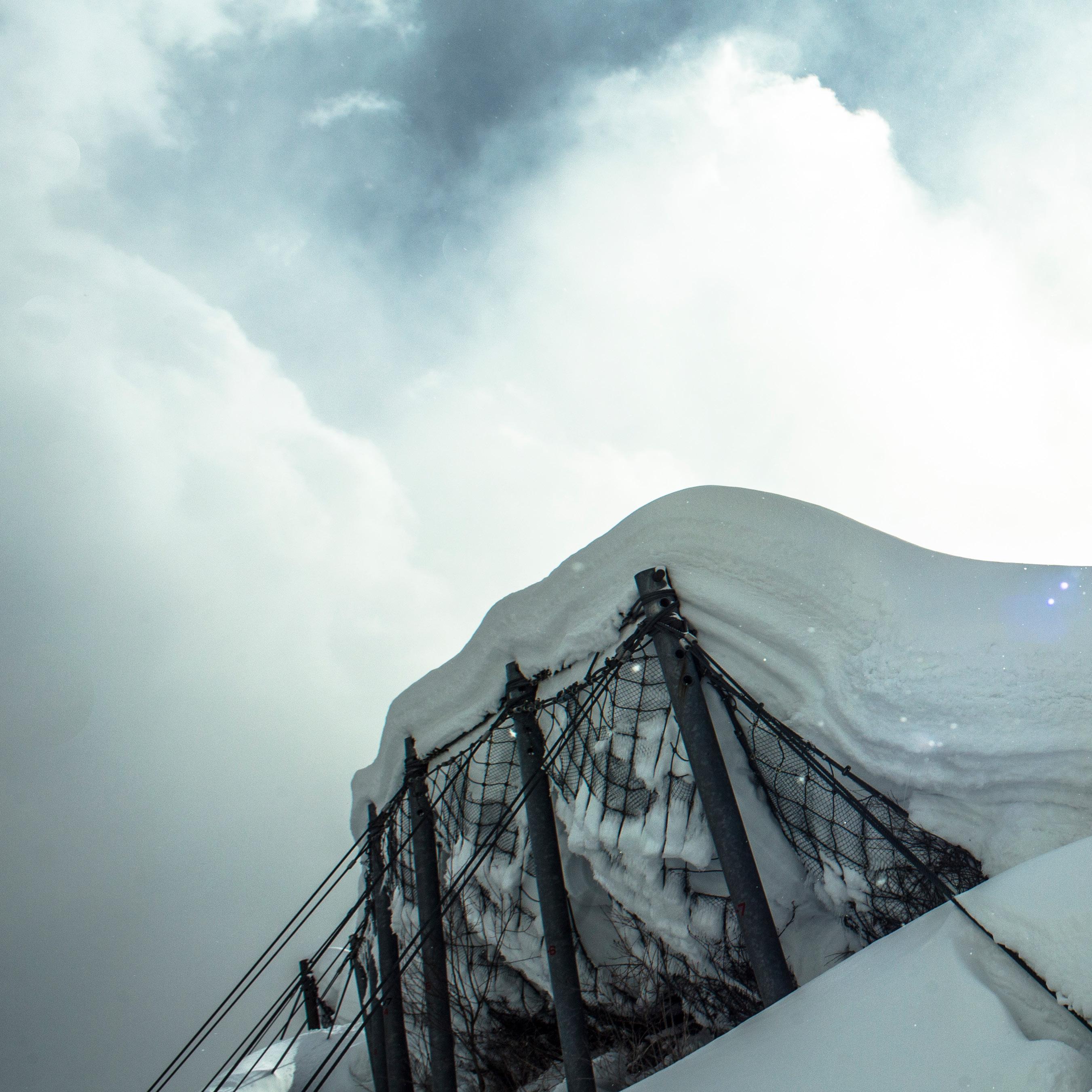
Halina Boyd hearts farming, lovely people, glorious mountain vistas, eating delicious food and exploring the world. @hbombtheoriginal

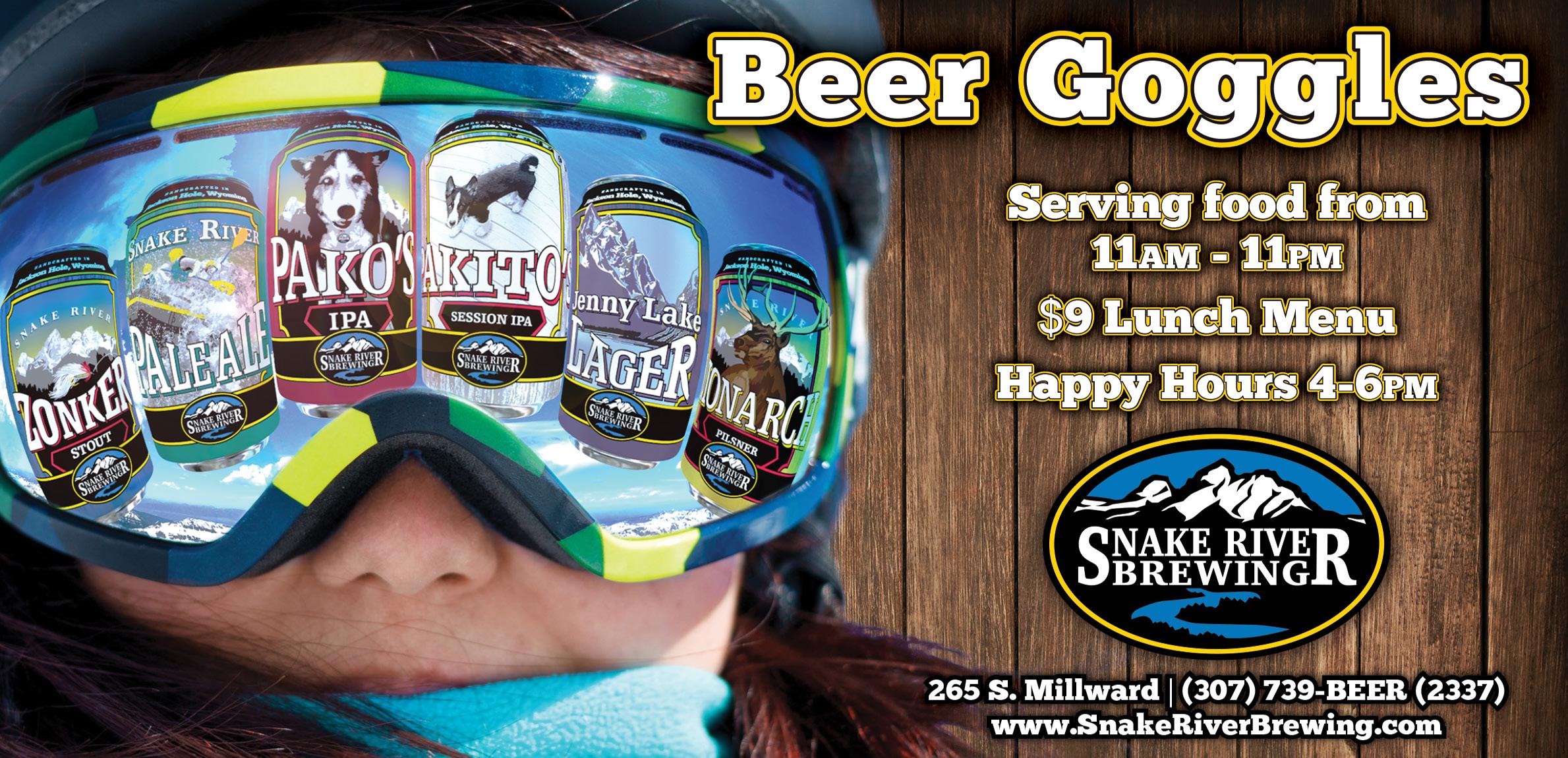
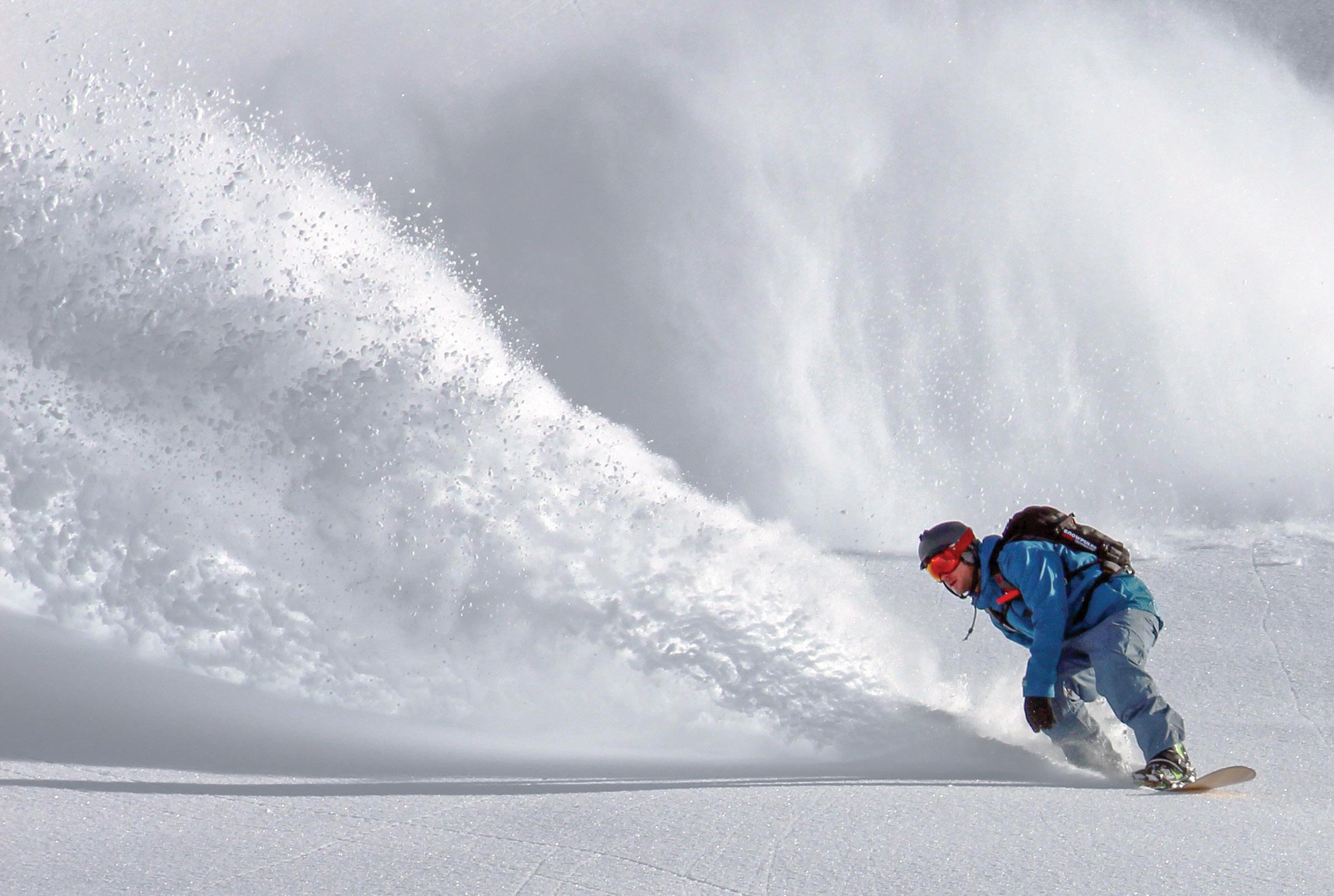
prods +yodes
Real talk with snowboarding’s chosen sons.
INTRODUCTION: ROBYN VINCENT
PHOTOS: KATSUHIDE FUJIO & AARON DODDS
What sets Blake Paul and Alex Yoder apart from other riders? Two young members of Jackson Hole’s royal family, Blake and Alex cut their teeth on burly terrain with local masters like Bryan Iguchi and Travis Rice. Their insatiable appetite to progress and a deep reverence for their craft fuels their definitive styles. Blake employs a fluid, lanky finesse across milieus, from the pavement to the park to the backcountry, while Alex has recently immersed himself in snowboarding’s soulful genesis – exploring its surfing aesthetic and assuming the role of mentor to the next generation of riders. What’s really rad about both these guys, however, is the kind of people they are off the mountain – just so damn likable. When you’re this good, it’s easy (some might say inevitable) to carve a path of cockiness. But no matter how many times Alex slashes deep, dreamy pow in the Japanese trees, working with the legendary Gentemstick crew, or how many backcountry kickers Blake crushes around the world (check his season edit – the proof is in the landing), the two remain approachable, gracious and introspective. It doesn’t hurt either that Blake’s Insta edit game (you see dude chillen with ET?) is off the charts, or that Alex can pen an article with the same acumen that he delivers on a snowboard. When asked what they might like to contribute to this year’s issue, like every year, Blake and Alex came correct with ideas. For this edition, the two have chosen to interrogate each other. Fire away, boys. rv
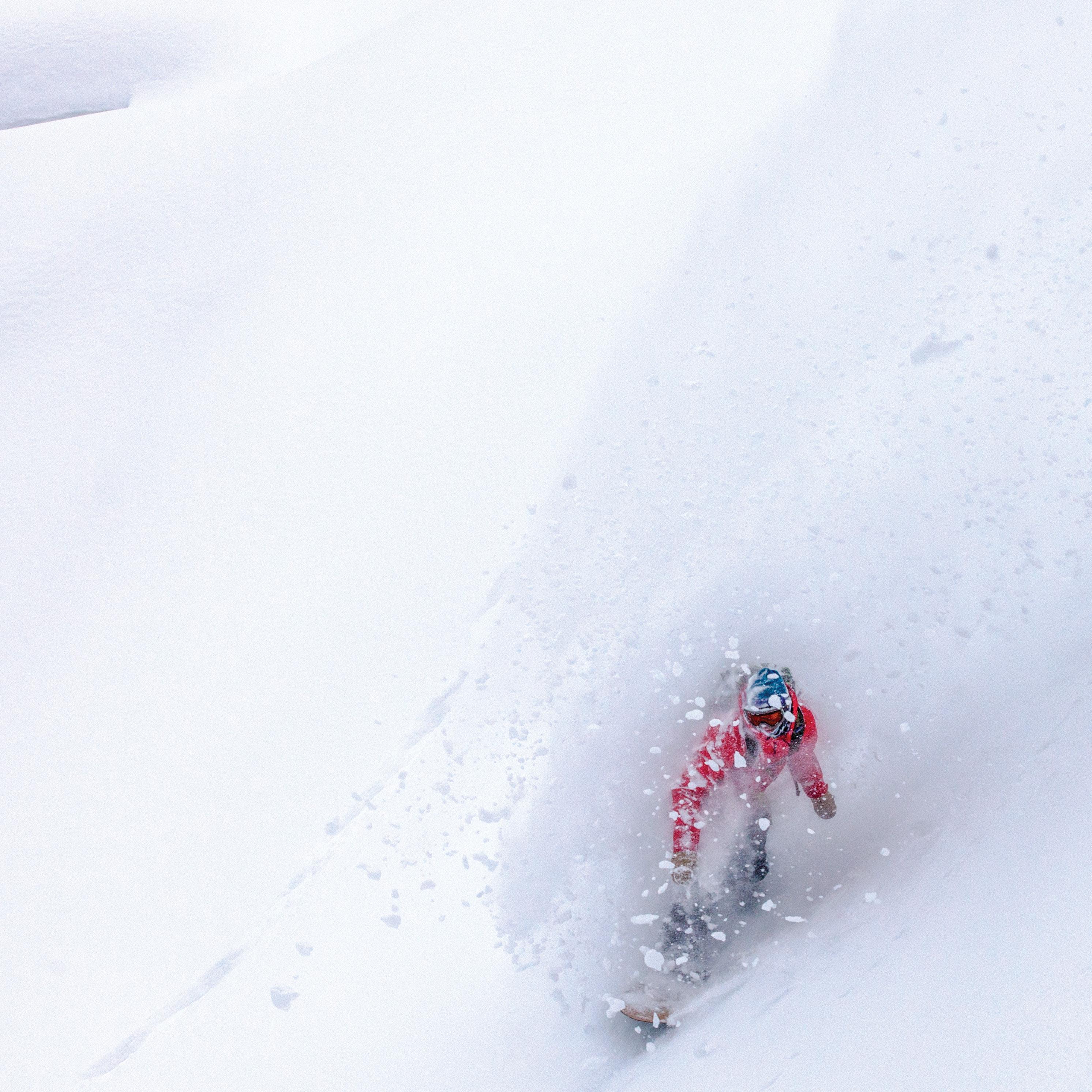
Alex Yoder enjoys the powdery fruits of Japan.
Alex the Benevolent surrounded by his muses.
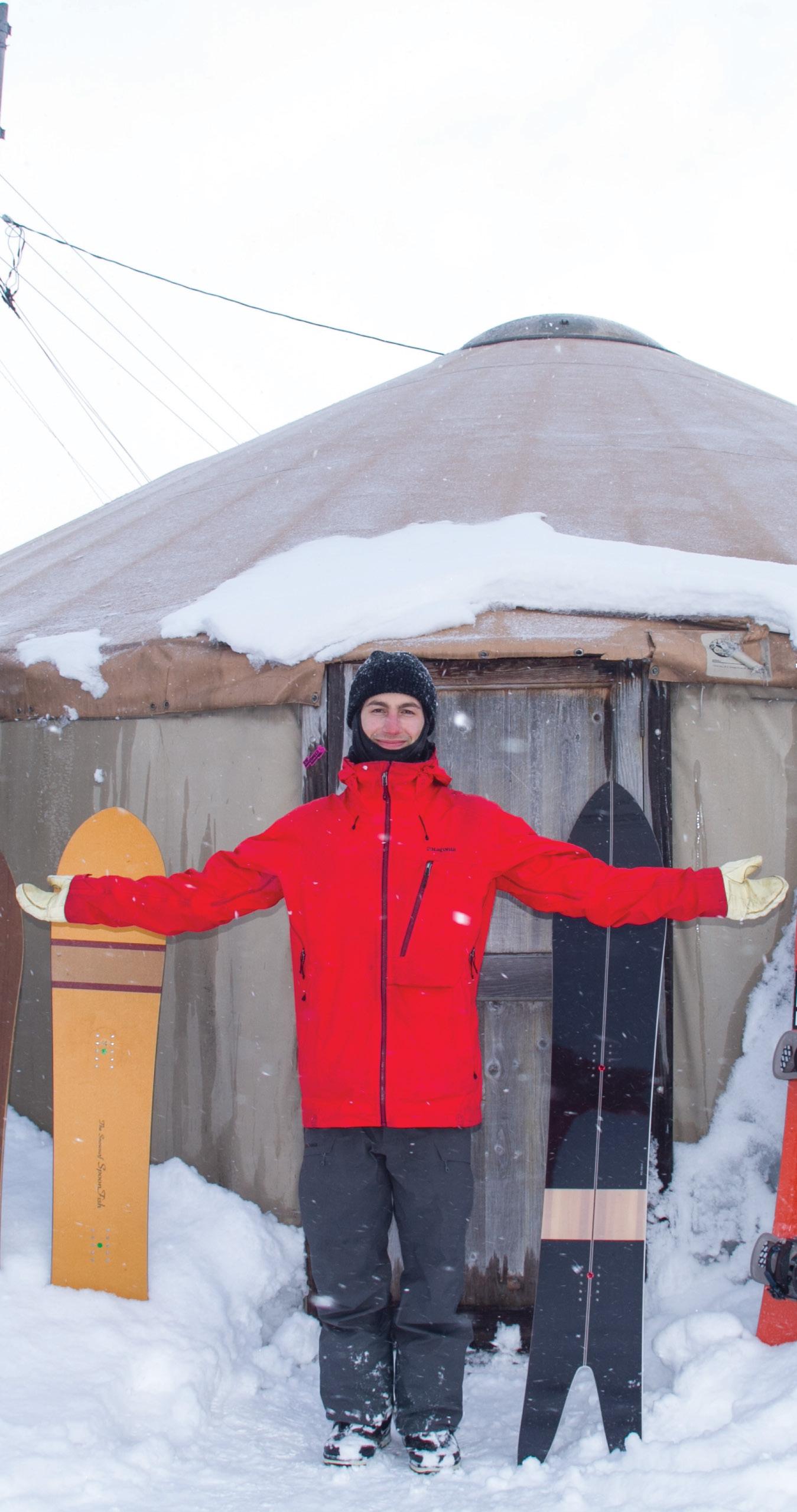
BLAKE PAUL asks ALEX YODER
BLAKE: Hey Yodes?
YODER: Sup Prods?
BLAKE: What’s better Jackson or Japan?
YODER: They’re both the best.
BLAKE: Can we get an explanation, why is it so special over there?!
YODER: Jackson is impossible to top on a lot of levels –backcountry access, lift access, vertical drop, etc. What I love about Japan is how humble and welcoming the country is, people and terrain alike. The riding for the most part is relatively mellow, the people are just incredibly nice and you can literally park your car at an onsen (hot spring) hotel that dead ends at a backcountry zone, hike from the parking lot, take a few laps, and then ride straight to the onsen and thaw out. Good living.
BLAKE: How much time did you spend in Japan last winter?
YODER: Eight weeks.
BLAKE: You’ve taken a unique role in the snowboarding world, not only being an ambassador for the brands you ride for, but also dipping into the business side a bit.
YODER: Yeah, I like having various involvements in the companies I work with. Snowboarding is my passion and the thread that holds it all together, but I’m also interested in what’s behind the scenes. There are a lot of fascinating, brilliant and creative people to learn from and cool opportunities to express other talents.
BLAKE: Respect. And you’re working with Gentemstick now? Seems like those pow surf shapes are blowing up.
YODER: Yeah man, the Gentemstick connection was true serendipity. I was asking for something that I didn’t even know existed and then all of a sudden it just found me. It’s an entirely different riding philosophy that I had never experienced before. The Japanese are known for mastery.
ALEX YODER asks BLAKE PAUL
YODER: Blake, we need to talk. What twisted individual died your hair pink?
BLAKE: Oh man, that would be my boy Spenny. Sketchy decisions always happening with the hair.
YODER: Can you describe LTC in one word?
BLAKE: Ignorant-fun. Does the hyphen make it one word?
YODER: If you could see through the eye of any Seinfeld character, who would it be and why? Please include a quote from that character.
BLAKE: It would likely be Kramer. That’s the dude. “Here’s to feelin’ good all the time.” (As he chugs a beer with a cigarette in his mouth.)
YODER: Do you think anyone besides our friends know what B Proddi actually means?
BLAKE: Haha. No, they don’t. I get that question all the time. It’s a funny answer… I guess I just like my fresh product, you know? It stuck when I ordered a bunch of gear to a buddy’s house on the road, then I carried that tradition on everywhere I went.
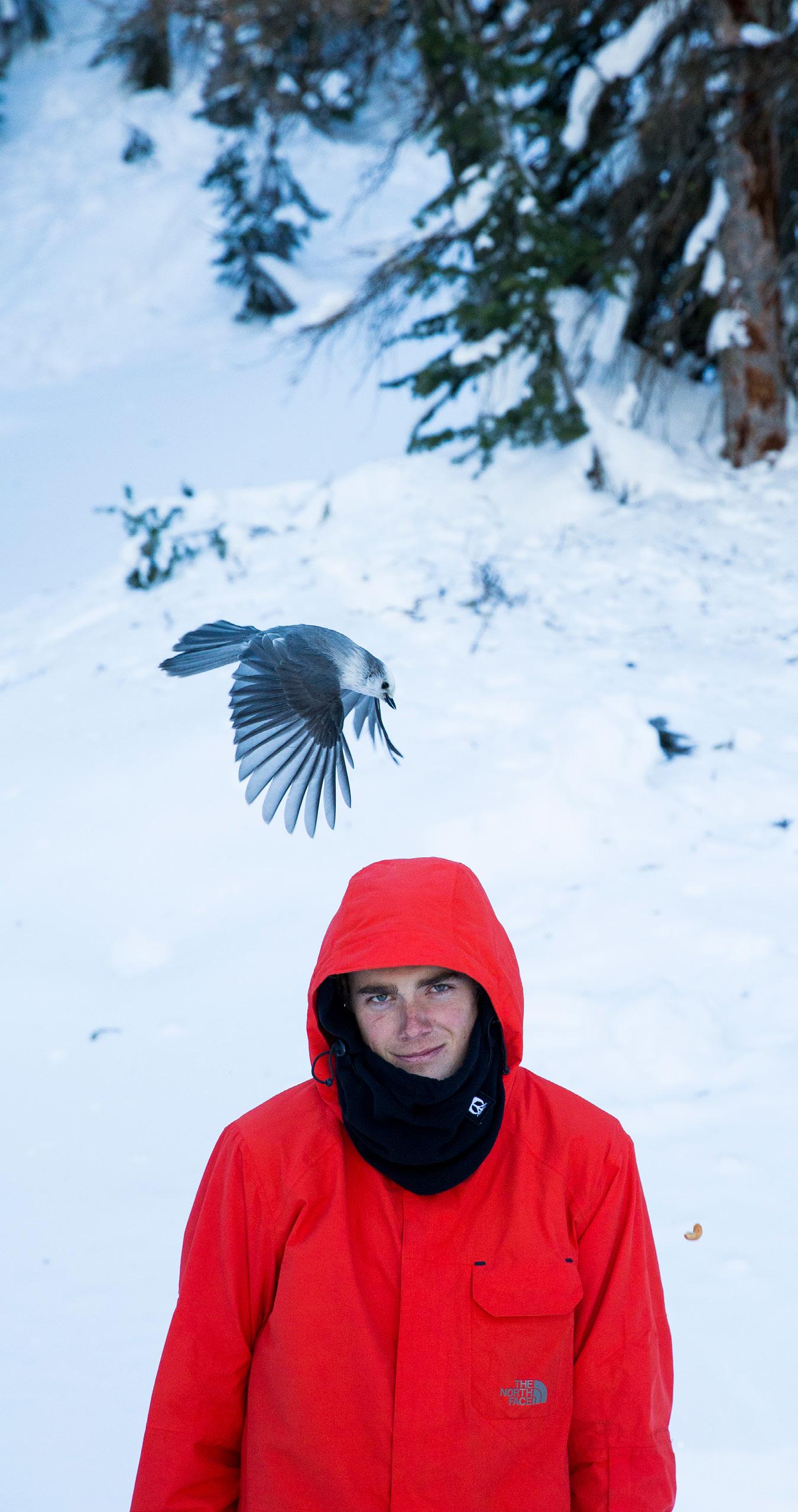
YODER: I think it’s fair to say that you’re the only boarder from Jackson to spend time filming in the streets. We’re a bunch of powder junkies, but you seem to like to board it all, is it because it’s more like skateboarding?
BLAKE: Powder is definitely predominant in my head when I think about snowboarding, but there is really no reason to shy away from all types of riding. Skateboarding could influence the street side a bit. I think it’s more the idea of riding whatever is in front of you, no matter the location or terrain. It’s only going to better you’re riding and show people that snowboarding can happen anywhere. That’s what the industry needs now; kids need to be able to relate, whether they are riding on a golf course or in Jackson Hole.
YODER: What was up with “Chile Con Pollo”? First of all, I loved it. It was quite the random crew and from the sounds of it, it came together pretty last minute?
Blake has the mad respect of all the woodland creatures.
Photo: Aaron Dodds
BLAKE PAUL asks ALEX YODER
When they find a trade or passion, they focus on truly mastering that aspect of their lives. Taro is a master shaper. His boards are a reflection of his philosophies about nature’s harmonies. I always thought I wanted one board that was “good” for everything, but now I have a lot more fun riding a few different shapes depending on how I feel or what terrain I’m riding. It’s just like surfing; you wouldn’t ride your 5’5” Mini Simmons at Mavericks just like you wouldn’t ride your 144cm Rocketfish on spines in AK. It’s a matter of purpose and harmony. And just for the record – they’re not just pow boards, they perform beautifully in all conditions.
BLAKE: What are some things outside of snowboarding that inspire you? Places? Projects? People?
YODER: Nature, music, rhythm, art, passionate people, good humor. Cole Barash is a guy that inspires me. I don’t know him, but I like shooting film and his photography has such subtle depth, it’s like the best story you’ve ever heard whispered into your ear. I’m inspired by simplicity, too. I spent some time farming this summer and it’s no simple task, but the lifestyle is honest and pure and I appreciate the cyclical nature of working for sustenance.
BLAKE: When is your pup Lucy gonna film her first video part? #travelswithlucy
YODER: I have a cute video of her eating a carrot. She loves carrots. I’ll send it to you for a cut shot in the next #BProddiProductions
BLAKE: What’s up for this winter?
YODER: At the moment I’m plan to go to the Dirksen Derby in early December then coming back home for a while. I had a great day hosting a little carving clinic with the Jackson Hole Freeride Program snowboard grom squad last season, so I’m hoping that happens again. As usual, the ideas are there and the plans are weather dependent so we’ll have to wait and see!
Blake Paul likes to move fluid on snow, concrete, or in the ocean, sketch a bad drawing, film Instagram videos (#bproddiproductions), and go to cool places with cool people. @blakepaul The outer leaves of a purple cabbage plant on the brink of maturity aren’t as purple as you’d expect, there’s a mesmerizing dark green hue at the base of the leaf that is not purple, nor green or blue. This is Alex Yoder’s favorite color. @yoderyoder
ALEX YODER asks BLAKE PAUL
BLAKE: Yeah it did, the trip pretty much started as a joke. Myself and filmer Jon Stark were thinking about sending it down there, and making a video that was visually different from what was coming out on the internet at that time. Then somehow we pulled it together with no outside pushes from anyone. We assembled a crew of close friends, who are also incredibly creative, talented snowboarders. We had no agenda or rental car, or anything. We went there to snowboard and document whatever we wanted along the way. Rad that Snowboarder Magazine and my sponsors were able to get behind it last minute and support us. Check the story and video on Snowboarder Mag’s site if you wish.
YODER: I heard Nicolas Muller joined GNU because he always wanted to be on the same team as Blake Paul and the Warbington brothers. Is that true?
BLAKE: Haha yeah, I wish… In all seriousness, it’s awesome that he chose to ride for GNU. When I spoke with him a bit, you could really tell in his voice how hyped he was on riding the boards: “Gnu man. I just thought – GNU… so sick,” he said in his snowboarding sensei voice.
YODER: You are a man with taste. You’re clean, organized and classy. To break down the broad “What is style to you” question, what aesthetics do you appreciate and from where do you draw inspiration for your personal style?
BLAKE: It’s just something I’m down with I guess, haha. Clothes in general, the way certain things can look when you’re snowboarding or skating. A lot of people blend into each other. If you pay attention to what’s happening in the skate fashion world, snowboarders are pretty boring. I always look up to people that are doing things their own unique way. People that don’t take themselves too serious, push the limits a little, and create something of their own.
YODER: What is the most far out goal on your bucket list?
BLAKE: I want to catch a marlin fish at some point in my life.










